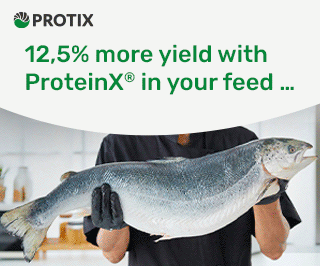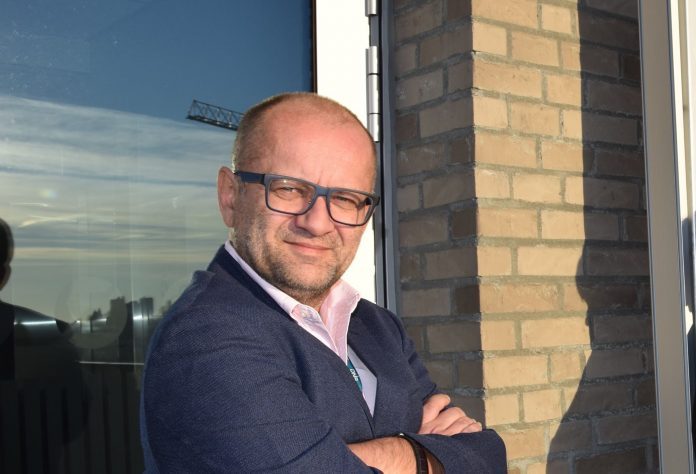We live in good times for salmon farmers.
Since we met at AquaNor two years ago, the seafood index on Oslo stock exchange is up by 70% and the Norwegian salmon farmers have made more than €5 bn in pre-tax profits. The value creation per job in the sector is a stellar €400,000 per year. That is 4 times the national average.
The sector has also become a significant part of Norwegian exports, generating a lot of foreign exchange revenue for the country. In the old days there was a lot of focus on such industries producing FX. The reason was that a small country like Norway is very dependent on having foreign currency in order to pay for imports. That focus disappeared however when the oil revenues really started kicking in. But I think it will come back as the oil slowly declines into the horizon over next decades. Back in the day people promoting the FX aspect of value generation used to say “we can’t make a living cutting each other’s hair”. Professor Victor Norman at The Norwegian School of Economics and Business Administration would fire back at that statement saying that “we can’t make a living smelting aluminum for each other either”.
There is truth to both statements. But a key point is that industries which are globally competitive will always be more difficult to develop than local service industries. And Norwegian aquaculture is truly globally competitive. You don’t have to take my word for it, I will quote professor Torger Reve instead. The quote is from a brand new research report he is responsible for and which DNB has helped finance. He writes:
“The aquaculture industry is unique in a Norwegian context because it is a sector where we are actually a global leader in research based knowledge production and innovation. Other export industries in Norway are to a much higher extent using knowledge and innovation from other countries.”
This is a strong statement, and Torger Reve has a lot of credibility in this context. He is not a seafood enthusiast as such but rather the godfather of economic cluster analysis in Norway. I think few people have a better overview of Norwegian business than he does. His statement fits well with our view in DNB Seafood also – we often say that Norway is very strong in many industries, but the only one where Norway is a clear global leader is salmon farming.
But even if things are good now it has not always been like that.
I guess most of you know Helge Moen in the investment company Kverva. He was an equity analyst back in the day covering salmon farmers and banks. That combination – salmon farmers and banks – sounds really odd. But at that time it actually made a lot of sense because credit losses related to farming was the key driver of bank earnings.
When I started as an equity analyst myself in 2005, I told my new boss I would cover all the consumer related equities, except farming since that was an absurd industry. At that time when you looked at the stock prices in the newspapers you could always see that Pan Fish was either up 33% or down 25%. The reason was the share price had collapsed to a range of NOK 0.03 to NOK 0.04. And the smallest possible move in the stock exchange’s trading system was NOK 0.01 – equaling 33% on the way up from NOK 0.03 to NOK 0.04 and 25% on the way down again. But then John Fredriksen bought Pan Fish and merged it with Fjord and Marine Harvest and that was the kick off for new optimism in the sector.
One contributing factor to the collapse of Pan Fish and others was increased production from Chile which put pressure on prices. In the Norwegian stock market nobody had really heard about the Chilean industry at that time. Information didn’t flow as freely as it does now. The stock market is not only a place to raise capital or place savings, it can also been seen as a tea party where different players exchange information and views. In that context it is very positive that Camanchaca is listed in Oslo, helping information flow better between the world’s two largest salmon producing countries.
Another memory form my early days as an analyst was my first big public presentation with most of the listed salmon companies present in the audience. I had covered the industry for about 15 minutes it felt like, so I was a bit nervous when I scolded the industry for topping up its very high operational leverage with very high financial leverage. Today the situation is very different. The operational leverage is still high due to the very high earnings sensitivity driven by the volatile salmon price. But now the volatility generally means that results vary between good and very good instead of between loss making and modest profits.
And the financial leverage has actually not increased much – debt levels in absolute terms and in relation to harvest volumes are nearly unchanged – which means that debt measured against earnings or equity value is very low. That makes the industry financially robust if there is a downturn in the future, and it is also very different from the situation of many energy companies prior to the oil price collapse a few years ago.
We have spoken about difficult past and good current situation. So what about the future? Must all good things come to an end?
The rise and then decline of the Roman empire is a classic example that nothing lasts forever. Now we witness maybe a little bit of the same on the global stage – the trade war between the US and China is more than a battle about tariffs – you can also read it as a battle for the position as the world’s no 1 superpower. It is not always easy to detect fundamental changes as they happen.
The current good times in salmon started with growth ending in 2012 which lifted prices. But looking at the auction for green licenses two years later in 2014 it doesn’t look like the industry at that time had really digested the fact that the dynamic had changed fundamentally. The average bid was around € 4m, which was not up from the previous cycle. And many bids were below 20. The lesson is that turning points are always easier to see in hindsight, but being a little paranoid may help.
Even if there are no guarantees, we still believe the good times may last for many decades. This is an industry which is supported by a long list of mega trends.
But even so there will always be problems along the road and these will need to be overcome for the industry to continue to prosper. Sustainability is currently the most obvious one. There are very different views out there. Parts of the public look at the industry like fat cat millionaires who pollute the fjords. But at the same time the leading sustainability NGO FAIRR ranks the salmon farmers on top among listed protein producers globally. This perception gap is partially about communication. Salmon farmers still have relatively small communication staff compared to many other industries, even if they in many ways are more dependent on good communication than most. They literally depend on the trust of politicians, but also voters and consumers for their licenses to operate.
And there are many positive stories to tell. The new acronym for sustainability is ESG – Environmental, Social, and Governance. The salmon industry for example has a very good social story to tell. There are many thriving remote local communities around the world which would have died without the salmon industry. The small island Lovund far off the coast of Nordland has Norway’s highest tax revenue per person due to salmon farming. In Bildudalur in Iceland’s west fjords people are building new houses for the first time in 30 years, in Djupivogur in the Eastfjords there is now a waiting list to get your kid into kindergarten.
But even if the industry continues to do well, it doesn’t necessarily mean that the very high margins we see currently will last forever. In his report Torger Reve, and his coauthors from University of Stavanger, say that the current level of profitability is not sustainable. Their argument is obvious – the high profitability attracts capital and triggers innovation, which at one point will lead to higher supply growth and lower prices. It is difficult to point out how this will play out however, but already in 5 to 10 years visibility on competiveness and production cost for different land and sea based technologies will be significantly better they say.
In DNB we hope the industry will continue to do well. A prerequisite for the success of DNB Seafood is the success of our clients. We even think about ourselves as a part of the seafood cluster. Professor Reve would agree with us – in his world strong supporting industries and services are a key part of a successful cluster.



